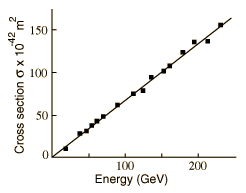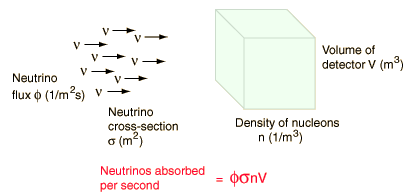Left-Handed Neutrinos
The relative orientations of spin and linear momentum for neutrinos and antineutrinos is apparently fixed and intrinsic to the particles.

For neutrinos the spin is always opposite the linear momentum and this is referred to as "left-handed", whereas the antineutrinos are always "right-handed". This evokes the picture of the right-hand rule for vector angular momentum. In this convention, the fingers of the right hand are used to indicate the sense of the spin or orbital motion, with the thumb pointing in the direction of the defined angular momentum. The momentum of the particle is used to define a preferred direction in space, and if you curled the fingers of your right hand to show the sense of the "spin" of the antineutrino, your thumb would point in this momentum direction. Hence it is a "right-handed" particle. For the neutrino, you would have to use the fingers of your left hand to get your thumb to point in the direction of the linear momentum.
This "left-handed" vs "right-handed" characterization is not meaningful for other particles, like electrons. An electron could have spin to the right and be traveling right and therefore be classified as right-handed. But from the reference frame of someone traveling faster than the electron, its velocity would be to the left, while its spin would be unchanged. This would mean that the electron is a left-handed particle with respect to that reference frame.
For neutrinos, however, which are traveling at the speed of light or very close to it, you cannot accelerate to a greater speed and thereby change their "handedness". We say that the neutrinos have "intrinsic parity", all of them being left-handed. This causes the weak interactions which emit neutrinos or antineutrinos to violate conservation of parity.
The property which has been called left-handed and right-handed here is sometimes called "helicity". The helicity of a particle is defined as the ratio ms/s, or the z-component of spin divided by the magnitude of the spin. By this definition in this case, the helicity is +1 for a right-handed antineutrino and -1 for a left-handed neutrino.
| Neutrinos as leptons | Role in supernova | Other neutrino types |
Reference
Griffiths
Sec 4.6
| HyperPhysics***** Quantum Physics | R Nave |





